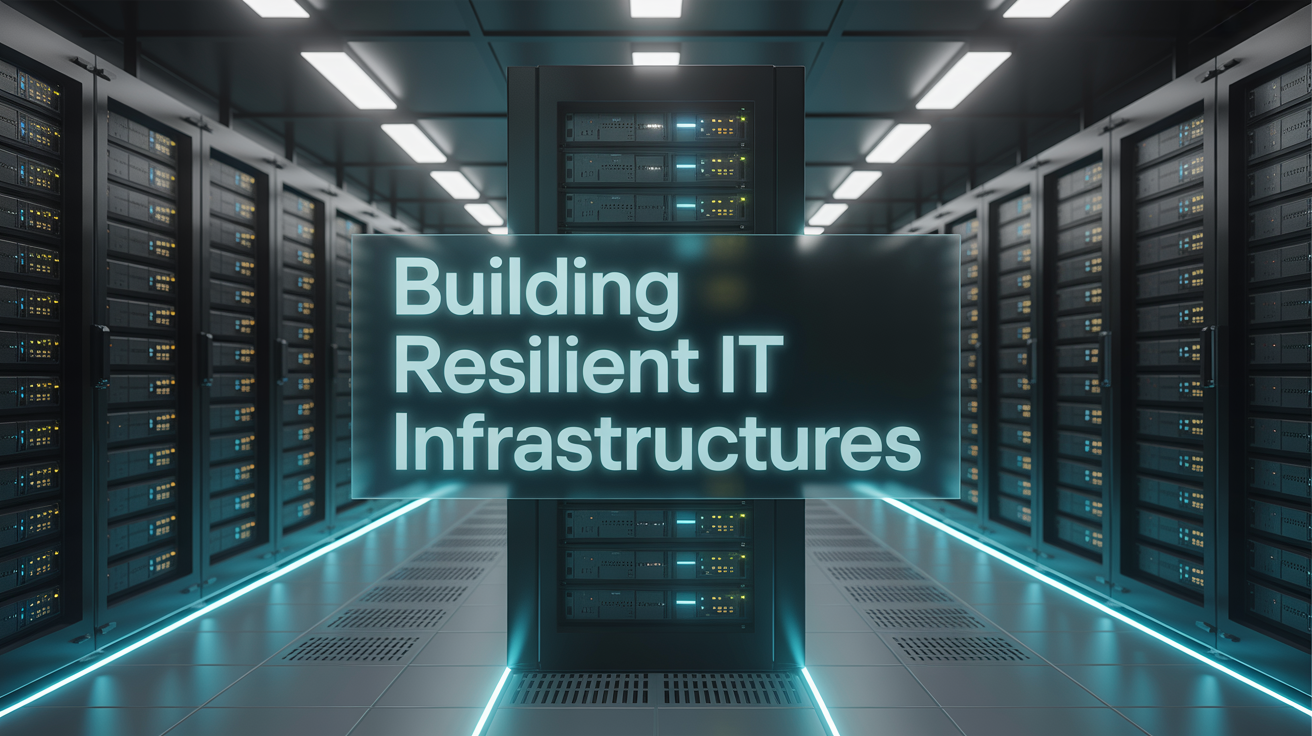Keeping your IT systems secure feels like playing whack-a-mole. Threats pop up faster than many businesses can respond, leaving them exposed to cyberattacks, data breaches, and operational downtime. If you’re relying on outdated tools or limited resources, the challenge grows even steeper.
Here’s a staggering fact: Cybercrime costs are expected to rise into the trillions by 2025. This isn’t just an issue for tech giants; small and mid-sized businesses are targets too. But here’s the good news—managed services offer solutions that enhance cybersecurity while improving resilience. In this post, we’ll explore how managed services tackle these challenges head-on. From monitoring threats around the clock to improving disaster recovery plans, they help keep your IT infrastructure strong.
Ready to protect what matters most? Keep reading!
Key Challenges in IT Infrastructure
IT infrastructures face hurdles like outdated technology and security gaps. Managing these challenges is vital to keeping businesses safe and running efficiently.
Legacy Systems and Limited Agility
Outdated systems often lack compatibility with modern tools, slowing down operations. These systems restrict flexibility, making it harder to adapt to evolving cybersecurity threats. “Legacy technology is like a ticking clock,” noted tech expert Mike Johnson. Businesses relying on old IT infrastructure face greater risks of breaches and downtime since upgrades are challenging and expensive.
Insufficient Cybersecurity Protections
Older systems often fail to meet modern security requirements. Ineffective encryption, insufficient patching, and outdated defenses leave businesses exposed. Cybercriminals take advantage of these weaknesses to steal sensitive data or disrupt operations.
Small businesses are frequent targets due to limited resources for threat prevention. Inconsistent monitoring increases the risk of unnoticed breaches. Without strong protections, ransomware, phishing attacks, and malware infections become more frequent and damaging. Many organizations are turning to advanced solutions like cybersecurity from Integritek to address these rising threats with comprehensive monitoring and prevention strategies. Neglecting cybersecurity investments can lead to costly downtime or irreparable reputation harm.
Fragmented IT Environments
Disconnected systems lead to weak security gaps. Multiple vendors, tools, and platforms often don’t work together cohesively. This slows down operations and creates blind spots in cybersecurity defenses. Without a centralized IT environment, monitoring becomes disorganized. Threats slip through unnoticed while teams handle scattered data sources. Managed services simplify this complexity by bringing oversight together and reducing vulnerabilities effectively. Providers such as iMedia’s IT management exemplify how centralized oversight can streamline fragmented environments while enhancing operational security.
Role of Managed Services in Strengthening Cybersecurity
Managed services keep threats at bay by identifying risks early and addressing them fast. They also strengthen your defenses with expert solutions designed to address evolving challenges.
Proactive Threat Detection and Monitoring
Identifying threats before they cause damage protects businesses. Managed services rely on ongoing monitoring tools to scan networks for unusual activity. These systems identify weak points and notify teams immediately, enabling a fast response.
“An ounce of prevention is worth a pound of cure” fits perfectly here. Early detection minimizes downtime, avoids data breaches, and ensures operations continue without disruption. For business owners, it means less stress over the safety of their IT infrastructure.
Rapid Incident Response and Recovery
Quick action during cyber incidents minimizes damage and downtime. Managed services assign skilled teams to detect threats, contain breaches, and restore systems promptly. This reduces the risk of extended disruptions that can harm businesses financially or diminish customer trust. Regular backup strategies protect critical data from loss or corruption. Disaster recovery solutions ensure operations resume with minimal delay after an attack or system failure. Managed services keep recovery processes effective, allowing businesses to sustain continuity during challenging times.
Access to Specialized Expertise
Managed services bring experienced cybersecurity professionals to your team. These experts stay updated on the latest threats, tools, and strategies in IT infrastructure defense. They help businesses address skill gaps without needing full-time staff. Their expertise spans across industries, providing your company with a broader perspective on threat mitigation.
They handle complex risk management processes effectively. With their support, organizations can address data protection challenges or compliance requirements with confidence. IT environments benefit from thorough assessments aimed at enhancing security measures while reducing vulnerabilities. This results in swift incident responses and stronger operations overall.
Building Resilient IT Infrastructures with Managed Services
Strong systems handle change better when experts manage risks, monitor performance, and prepare for challenges—learn how to fortify yours.
Cloud-Based Infrastructure and Scalability
Cloud platforms offer businesses the ability to adjust resources as demands change. Managed services combine these systems, ensuring operations continue efficiently during traffic increases or unexpected growth. For instance, e-commerce sites can manage holiday surges without interruptions.
Storing data in the cloud also strengthens disaster recovery efforts. Companies no longer face the risk of losing essential information due to on-site hardware issues. Managed IT providers oversee and maintain these platforms, reducing risks while improving performance and dependability.
Integration of Cybersecurity Frameworks
Managed services integrate cybersecurity frameworks to create strong defense systems. These frameworks provide structured processes that help businesses address threats effectively. For example, the National Institute of Standards and Technology (NIST) framework outlines steps like identifying risks, protecting assets, detecting breaches, responding to incidents, and recovering quickly after attacks.
Managed service providers incorporate such guidelines into their daily operations to reduce vulnerabilities. Teams conduct regular assessments to align the IT infrastructure with these frameworks. They manage tools for risk management and incident response without increasing complexity for internal teams.
This approach not only strengthens security measures but also simplifies compliance with industry regulations like HIPAA or GDPR. Clear protocols make responses quicker during potential data breaches or cyberattacks.
Regular Performance Monitoring and Optimization
Frequent checks on the IT infrastructure identify weak spots before they cause problems. Monitoring tools track system health, network performance, and security risks in real-time. This constant oversight helps businesses act quickly to avoid downtime or breaches. Improving systems increases speed, reliability, and efficiency. Regular updates keep infrastructure prepared for modern threats while maintaining smooth operations. These actions strengthen resilience and safeguard against unexpected disruptions.
Conclusion
Strong IT infrastructures are not optional anymore. Managed services help strengthen security and minimize risks. They bring expertise, prompt responses, and improved defenses to the table. Businesses that invest in them protect their future against cyber threats. It’s smarter to prepare now than regret later.





























